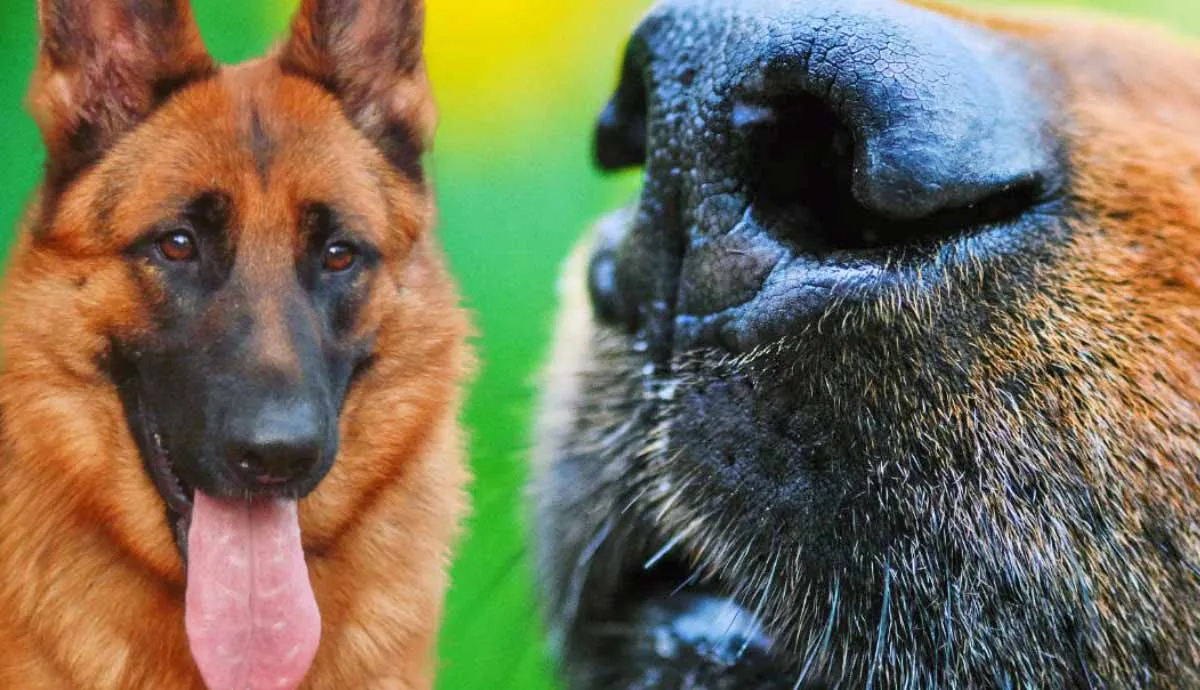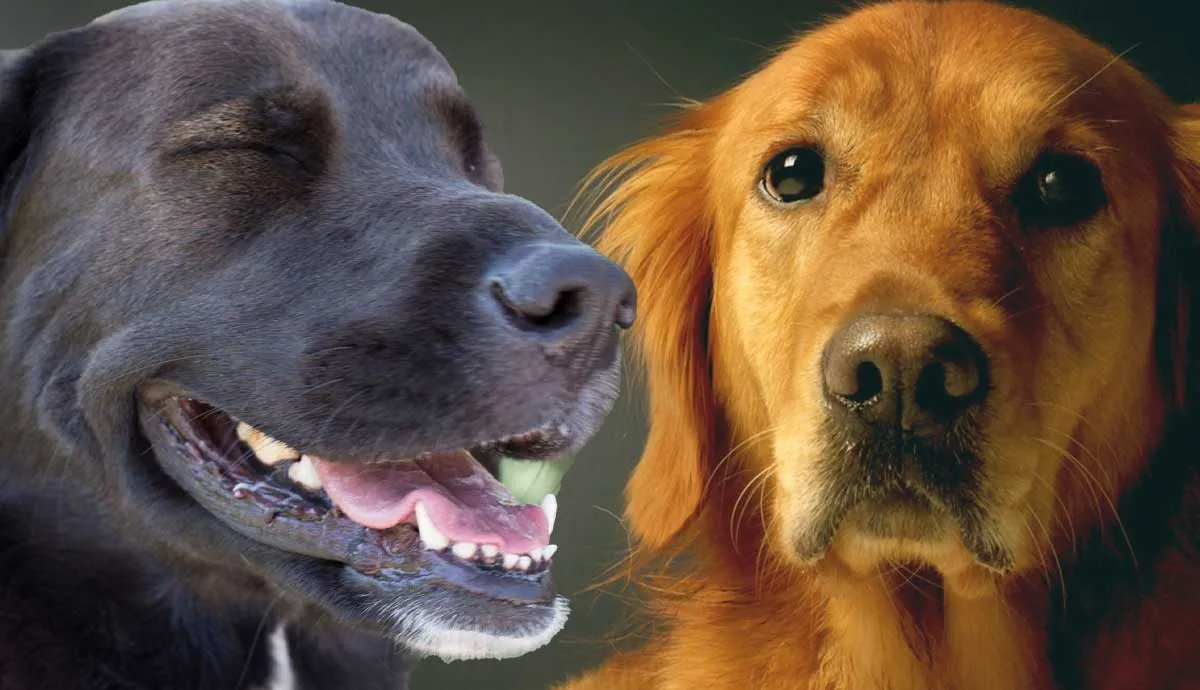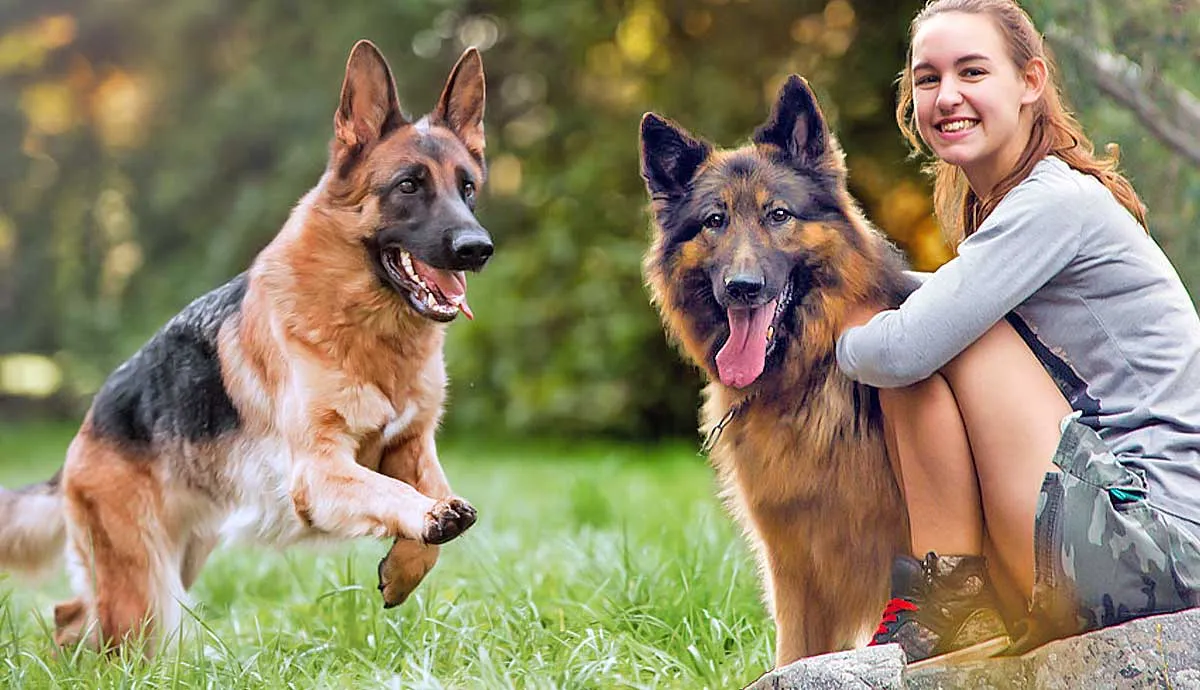Dogs have assisted humans in law enforcement nearly as long as they’ve been dutiful companions. Evidence of this relationship goes back to the Middle Ages, so it’s no surprise we still see them on the force today.
Police dogs serve their community dutifully, fighting crime, marking concerns, and tracking down victims to make the world a better place. In this article, we explore how they’re trained for the tasks, different jobs they may have, and how certain dogs make it into the police academy.
What Police Dogs Do
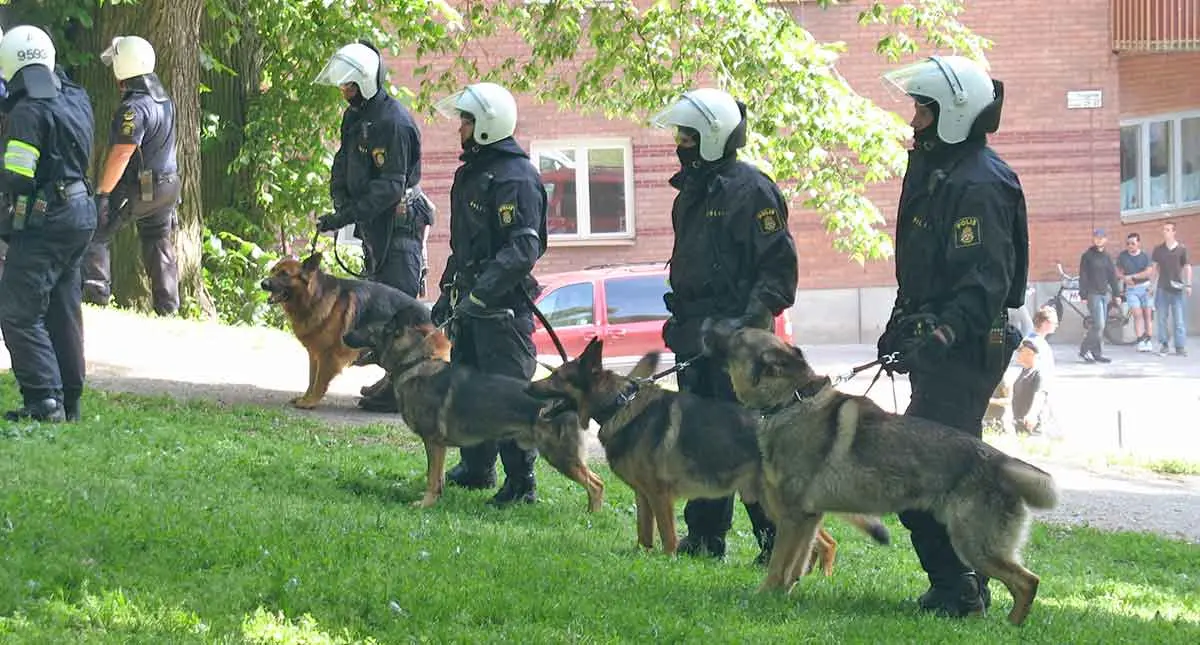
Police dogs usually work alongside a handler in a certain division of police work, like patrolling or keeping checkpoints safe. These career canines have the same shift length as their handler, and many get to clock out at the end of the day and spend some time relaxing.
Most canine officers serve dutifully until they’re about 5 to 10 years old. Once their body cannot keep up with the physical demands of the job, they’re honorably retired and most go home with their owner to join the civilian world.
Police Dog Training

While certain dogs are better suited to this line of work, talent only takes them so far. Plenty of dogs show suitability to the program, but it’s training that takes them to the top.
To start, police dogs must have basic obedience training. They should be able to reliably respond to commands off-leash, and this guidance builds on existing emotional intelligence and perception.
Once they have basic obedience down it’s time to hone their physical abilities. Police dogs must be able to run long distances without tiring, and they should be able to confidently clear walls or stairs without stumbling.
Police dogs are often trained for a certain task, mainly apprehension or detection. These dogs often cross over into other canine career fields, such as search and rescue or even military work, because of their stellar genes and ability to work alongside humans.
Many police dogs are trained overseas, and they share training programs with military canines.
Apprehension
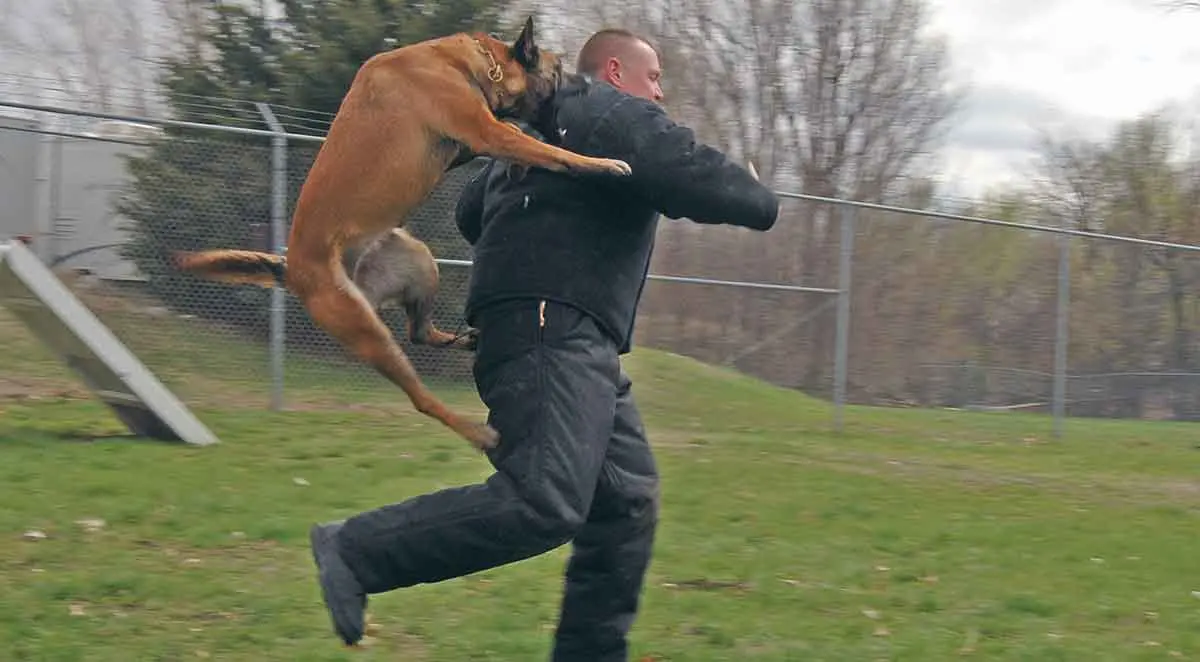
Canine police officers trained for apprehension learn how to take hold of suspects and keep them down until the human officer can catch up. They’re heavily trained in bite work to ensure they bite the right areas and keep a grip with their teeth without harming the suspect.
Apprehension dogs must be confident and brave. They also need the physical capabilities to outrun fleeing humans, clearing hurdles without slowing down. Herding breeds are a popular choice because of their intelligence and their sharp instincts.
Detection
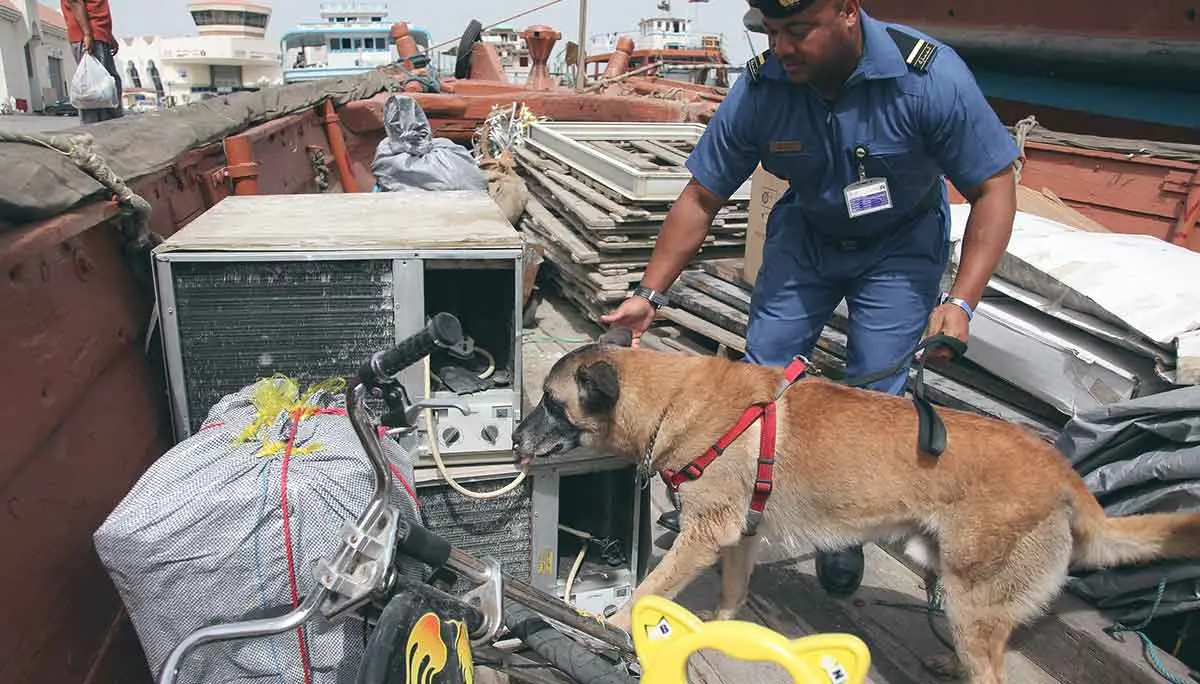
Other police canines put their nose to work.
Humans have about 5 million scent receptors in our noses, but dogs have anywhere from 100 to 300 million (depending on their breed). This makes it much easier for them to detect dangerous substances such as illegal drugs or explosives in vehicles, at airports, or at other checkpoints.
Detection dogs have learned that alerting their handler to certain smells, like drugs, accelerants, or the person they’re tracking, will get them high value rewards. They’re able to quickly discriminate between meaningless scents and their targets.
You often see detection canines at large, busy events where it could be difficult for their handler or human officers to pick up on nefarious activity. After a disaster, sniffer dogs are some of the first on the scene to find those injured and track down important details.
Often, larger police forces have canine officers specifically trained for search and rescue. Breeds like Bloodhounds have generations of carefully cultivated scenting genes that help them find kidnapped children, lost hikers, and important evidence.
How Police Dogs Are Chosen
Police dogs must meet a certain criterion before they join a municipality canine unit. They must have innate intelligence, confidence, strength, and stamina. While the ability to respond aggressively is a plus, they must listen to their handler without question and respond quickly to commands.
Departments usually source their police dogs from programs dedicated to meeting certain standards. European programs produce some of the most reliable canine officers, but the cost can be too much for smaller cities.
Any dog can make it as a canine officer, regardless of where they’re trained or where they come from, but there are certain breeds predisposed to the occupation.
Best Police Dog Breeds
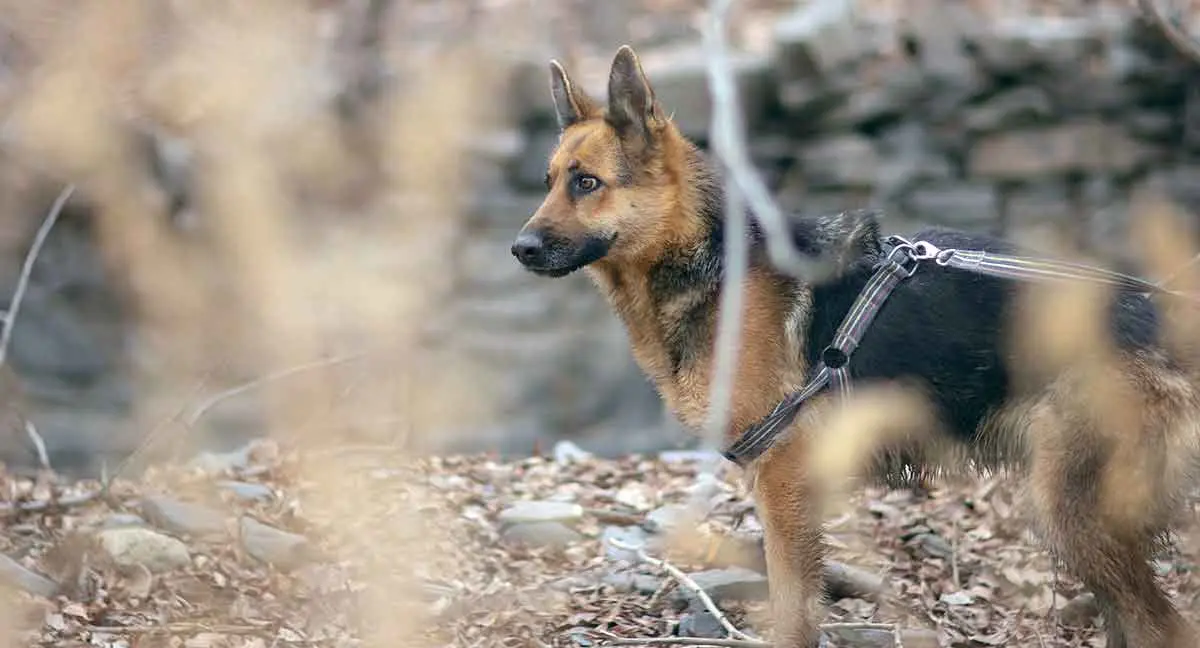
Some of the most common breeds selected for police dog work include:
- German Shepherds
- Belgian Malinois
- Dutch Shepherds
- Labradors
- Bloodhounds
Police units often opt for purpose-bred pure breeds because they’re more predictable in terms of personality, temperament, capability, and health. The department can dedicate the canine to a specific task, such as patrolling or substance detection, and trust they will have great success in that area.
Pit bulls and mixed breeds are growing in popularity with improved training programs in the United States, but they’re years away from being the go-to for any police department.
Regardless of breed, police canines are extremely brave individuals who put their lives on the line to protect and serve their handlers as well as the public.


